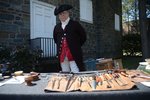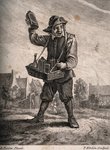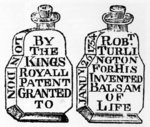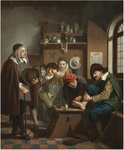 Narrowsburg
NarrowsburgLight Rain Fog/Mist, 43°
Wind: 8.1 mph
GRAHAMSVILLE, NY — This is Boston, 1775: it’s early in the Revolution, and Bostonians are under siege by the Patriots. But the civilians are also fighting a second battle—against disease, …
Stay informed about your community and support local independent journalism.
Subscribe to The River Reporter today. click here
This item is available in full to subscribers.
Please log in to continueNeed an account?
|





Related
GRAHAMSVILLE, NY — This is Boston, 1775: it’s early in the Revolution, and Bostonians are under siege by the Patriots. But the civilians are also fighting a second battle—against disease, particularly smallpox, which had a death rate as high as 30 percent.
As civilians flee the city, they run into a public-health measure designed to control the “speckled monster.”
People were put in smokehouses—and smoked.
“They thought it would drive away what caused smallpox,” said Donald Terpening, a retired biology professor and reenactor with the 1st Ulster Militia. “They didn’t know smallpox was a virus. They didn’t know what viruses were.”
Terpening will talk about medicine during the American Revolution at Time and the Valleys Museum on November 6; see below for details.
But he took some time recently to explain how 18th-century people thought about disease, what they suffered from, and how illnesses were treated.
The doctors
Physicians did everything: made medicines and prescribed them, performed surgery, diagnosed disease. But not all went to medical school.
“There were two medical schools in the U.S. at the time, and not a large scientific community... [Some doctors] trained in Europe, but of 3,500 to 4,000 physicians [here], 700 had degrees,” Terpening said. The rest learned through apprenticeship. And the problem with that was “you were only as good as your mentor.”
Which is not to say that the doctors of the time were stupid or incompetent. “The most successful developed a reputation of background and process that would [ease] or cure.”
But the scarcity of doctors, especially in rural areas, meant that family members stepped in.
Every man his own physician
The average colonist wasn’t up on the latest scientific advances, such as the circulation of blood. “Many people didn’t read or write,” Terpening said.
But they had knowledge, gleaned from others’ experiences, trial and error, and for those who could read, “pamphlets that could be used by the layperson.”
That layperson was often female. “You can find recipe books handwritten by women. They kept herb gardens, and herbs were important,” Terpening said.
Books, too, for those that had them. Martha Bradley’s 1756 “English Housewife,” for instance, includes recipes for medicines next to recipes for preserves.
People paid attention. “If [a treatment] worked once, it will work again.”
Disease, 18th-century style
Oh, there was a list. Smallpox, of course. Syphilis. Yellow fever, which ravaged Philadelphia in 1793, he said. Typhus. The flu. Infections. Cancer.
But what caused them? “[People] were beginning to get away from supernatural ideas,” Terpening said. Some believed in humors. Some believed that disease was caused by the environment, by bad air.
Nobody knew about bacteria or viruses, and one doesn’t see instructions about handwashing as a way to control the spread of infection. Germ theory, he said, wasn’t developed until the 1860s, and “it didn’t come to America until later.”
There were some treatments. Go back to smallpox. There was no cure, Terpening said. (Not even smoking potential patients.)
But there was inoculation—”George Washington had to issue orders for inoculation four times. There was resistance.”
Terpening’s discussions partly focus on medicines. People made pills, poultices, teas. Sometimes those treatments were harmless. Sometimes not.
“The heavy metals,” he said, when asked what were the most dangerous cures. “Mercury. Calomel was used for syphilis and parasites. It was very effective.”
Until one died of mercury poisoning, anyway.
“They used lead, silver—that prevented bacterial infections. Copper.”
You could take something benign, like rosewater, and add lead to it, he said, “turning it into a toxic substance.”
Tumors generally could only be removed if they were on the skin’s surface, unless they were on a body part that could be cut off. Consider the mastectomy, which has been around for centuries. But until the discovery of ether in the mid-19th century, there was no anesthesia, and little to control pain during the operation, or infection afterward.
Could be nasty, brutish and short
Life was not easy in the 18th century for most people. Health didn’t just depend on access to medicine, Terpening said. Those who lived the longest—take Ben Franklin, who lived to 84—had safe occupations. The farmers, the blacksmiths, the soldiers, dockworkers—those jobs could be dangerous.
Women died in childbirth. Kids had accidents.
But medical care at the time did its best to mitigate the hazards of life. To learn more, don’t miss Donald Terpening’s talk.
“Medicine During the American Revolution” will take place at Time and the Valleys Museum, at 2 p.m. on Sunday, November 6.
The museum is located at 332 Main St., State Rte. 55. Admission to the program is free for museum members; for non-members, the cost is $5 for adults and $2 for children.
For more information, visit timeandthevalleysmuseum.org, or email info@timeandthevalleysmuseum.org.
Related stories

Comments
No comments on this item Please log in to comment by clicking here